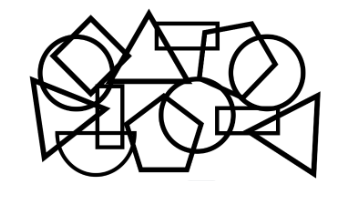

If you’ve ever asked your child, “What did you do at school today?” and gotten the classic reply, “Nothing”, you’re not alone! Answering questions is an important communication skill, but it develops gradually over time. Knowing what to expect and how to support your child at home can make a big difference.
Each type of wh-question has a different purpose, and they don’t all develop at once.
Children often develop these at different rates, but if your child is consistently having difficulty, it may be worth checking in with a speech-language pathologist.
Answering “WH-Questions” is a skill that develops step by step. By weaving simple questions into daily routines, you can help your child build strong communication skills without the pressure.
If you notice your child consistently struggles to answer age-appropriate questions, our speech-language pathologists can help. Reach out to learn more about how we support children’s language development.

Disclaimer:
The content provided by this blog and website is intended for general educational and informational purposes only. It is not a substitute for professional medical advice, diagnosis, or treatment. Always seek the guidance of your child’s physician, therapist, or qualified healthcare provider with any questions or concerns about your child’s health or development.

“Visual perception is defined as the total process responsible for the reception (sensory functions) and cognition (specific mental functions) of visual stimuli.” (Case-Smith, O-Brien)
Visual perception consists of the visual-receptive component and the visual-cognitive component.
Visual-receptive component refers to how we receive and organize visual information, about the world around us, through our visual receptors. The information is then sent to our brains, where it is interpreted, coded, and organized for us to make sense of what is being seen. This process is called the visual-cognitive component. We understand and know what we see through the combined efforts of these two components, and they are both needed for functional vision. In this blog post, we are going to focus on the latter.

Why is visual perception important?
Visual perceptual skills enable identifying and recollecting objects, shapes, and colors. It allows us to make clear sense of objects’ configuration, spatial properties, and size. Without sufficient visual perception, people can find it difficult to navigate through their day-to-day life.
Children’s areas of occupational performance in activities of daily living, such as self-care, school, learning, play, leisure, and social interaction, can be impacted by visual perceptual difficulties.
These difficulties can often present as:
Activities for development of Visual perceptual skills
Visual Discrimination
Visual discrimination refers to the ability to identify and recognize differences and similarities in visual images—for example, the ability to discriminate between shape, color, position, and form.
Example:
Which of the designs below is like the one at the top in the blue circle?

Activities:
Visual Memory
Visual memory refers to the ability to retain and recall a visual form after a short interval.
This skill is important for recognizing and remembering letters and numbers and sight words. It is also important to remember what was seen when copying from the board.
Example:
Look at the design in the blue block for a few seconds and try to remember it. Now cover the design and show which one it was.

Activities:
Spatial relations
Spatial relations refer to the ability to perceive where objects and forms are in space in relation to oneself and/or other objects.
Example:
Which picture is different from the rest?

Activities:
Form Constancy
Form constancy refers to the ability to determine changes in size, shape, and orientation and to establish that forms are the same in different environments.
Example:
Where can you find the same design as in the blue circle? The design can be smaller, larger, darker, or turned around.

Activities:
Sequential Memory
Visual sequential memory refers to the ability to retain a sequence of visual objects and recall them after a short time.
Example:
Look at the designs in the blue block for a few seconds and try to remember them. Now cover the design and show which sequence it was.

Activities:
Figure Ground
Figure-ground perception refers to the ability to identify an object in a busy background. These skills are used when shifting focus from a piece of paper and a whiteboard when copying. It is also important to find a place in the copied words, particularly when a page or board is cluttered with information.
Example:
How many circles can you find hiding in the picture? 
Activities:
Visual Closure
Visual closure refers to the ability to visualize and make sense of objects and shapes that are only partly visible.
Children who present difficulties with visual closure might find it challenging to find objects when only a part of them is visible. They also might require more time to recognize words.
Example:
If the picture in the blue block were completed, what would it look like?

Activities:
In conclusion
The perceptual skills discussed above are not independent from one another and perceptual tasks require us to use a number of different processes and skills together.
When difficulties with visual perceptual skills are suspected, it is important to consult a healthcare professional.
References:
https://www.ot-mom-learning-activities.com/
Jane Case-Smith, Jane Clifford O’Brien. (2015). Occupational therapy for children and adolescents. St. Louis, Missouri :Elsevier,
Test of Visual Perceptual Skills 3rd edition, Nancy A. Martin, Ph.D.

CREATING A LANGUAGE RICH ENVIRONMENT By Nora Knijf, Speech-Language Pathologist We are 21st century…
MY SLP JOURNEY By Janelle Syms, Speech-Language Pathologist I’ve always had a passion for…
The important skill of handwriting When Occupational Therapists identify a child who needs intervention…
SENSORY TOOLS FOR THE CLASSROOM: By Ashley Drover, Occupational Therapist Sensory tools can be…
THE CURSE AND BLESSING OF THE ELECTRONIC ERA: HOW TO SAFEGUARD OUR CHILDREN AND…